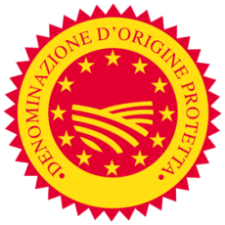Molise PDO Italy
The results of our efforts is an extra virgin olive oil of exceptional quality, with a thousand flavors and nuances…

PDO – Protected Designation of Origin “Molise”
REGIONAL ORGANIZATION FOR AGRICULTURAL DEVELOPMENT FOR MOLISE ”Giacomo Sedati” CAMPOBASSO section of LARINO.
Public Inspection and Certification Body of PDO oil ”Molise” recognized in accordance with EEC Regulation 2081/92 with Decree of the Ministry of Agriculture and Forestry n. 65192, 16/10/2003.
PRODUCTION RULES AND REGULATIONS OF “MOLISE” EXTRA – VIRGIN OLIVE OIL PROTECTED DESIGNATION OF ORIGIN.
ART. 1
Designation.
The protected designation of origin ‘MOLISE’ label is given to the extra-virgin olive oils produced in the area defined in the following Art.3, which satisfy the requirements and conditions established by the regulations CEE n 2081/92 and mentioned in this document.
ART. 2
Olive Varieties.
The ‘MOLISE’ PDO extra virgin olive oil is obtained by 80% of olives of the following main varieties (jointly or separately): Aurina (or Licinia), Gentile di Larino, Oliva Nera di Colletorto, and Leccino. The remaining 20% is obtained from other varieties (cultivated in the region) such as Paesana Bianca, Sperone di gallo, Olivastro Rosciola.
ART. 3
Area of Production.
The area of production of ‘MOLISE’ PDO extra virgin olive oil includes the following municipal territories: Acquaviva Collecroce, Agnone, Bagnoli del Trigno, Baranello, Belmonte del Sannio, Boiano, Bonefro, Busso, Campobasso, Campodipietra, Campolieto, Campomarino, Cantalupo nel Sannio, Carpinone, Casacalenda, Casalciprano, Castelbottaccio, Castellino del Biferno, Castelmauro, Castelpetroso, Castelpizzuto, Castelverrino, Castel S. Vincenzo, Castropignano, Cercemaggiore, Cercepiccola, Cerro al Voltumo, Civitacampomarano, Civitanova del Sannio, Colle d’Anchise, Colletorto, Colli al Volturno, Conca Casale, Duronia, Ferrazzano, Filignano, Forlì del Sannio, Fornelli, Fossalto, Frosolone, Gambatesa, Gildone,
Guardialfiera, Guardiaregia, Guglionesi, Jelsi, Isernia, Larino, Limosano, Longano, Lucito, Lupara, Macchia D’Isernia, Macchiagodena, Macchia Valfortore, Mafalda, Matrice, Mirabello Sannitico, Miranda, Molise, Monacilioni, Montagano, Montaquila, Montecilfone, Montefalcone nel Sannio, Montelongo, Montemitro, Montenero di Bisaccia, Montenero Valcocchiara, Monteroduni, Montorio nei Frentani, Morrone nel Sannio, Oratino, Palata, Pesche, Pescolanciano, Petacciato, Petrella Tifernina,
Pettoranello del Molise, Pietrabbondante, Pietracatella, Pietracupa, Pizzone, Poggio Sannita, Portocannone, Pozzilli, Provvidenti, Riccia, Ripabottoni, Ripalimosani, Roccamandolfi, Roccasicura, Roccavivara, Rocchetta al Volturno, Rotello, Salcito, San Biase, San Felice del Molise, San Giacomo degli Schiavoni, San Giovanni in Galdo, San Giuliano del Sannio, San Giuliano di Puglia, San Martino in Pensilis, San Massimo, Santa Croce di Magliano, Sant’Agapito, Sant’Angelo Limosano, Sant’Elena Sannita, Sant’Elia a Pianisi, Santa Maria del Molise, Scapoli, Sepino, Sesto Campano, Spinete, Tavenna, Termoli, Torella del Sannio, Toro, Trivento, Tufara, Ururi, Vastogirardi, Venafro, Vinchiaturo.
ART. 4
Cultivations Features.
The climatic conditions and cultivation features of olive groves assigned to the production of ‘MOLISE’ PDO extra virgin olive oil, must be those typical of the areas of productions mentioned in Art. 3. The cultivation method and pruning system chosen must give value to the qualitative features of the oils. Olives must be sound, immune by parasitic attacks and undamaged by adverse weather conditions ( hail, frost, wind, etc.). In anti-parasitic treatments must be used only products that don’t leave traces inside the oil, according to the law. The harvest must take place when olives become dark, which depends on the seasonal trend. This phase is traditionally considered ideal for the harvest and must be necessarily respected, because, together with the region climatic features, it gives the oil the peculiar flavour that distinguishes it. The drupes harvest must be carried out by hand and/or by traditional manual or mechanized means, avoiding the contact of olives with the ground. The use of olives fallen to the ground is forbidden. The transport must take place in a suitable way to avoid damages to the fruit. After the harvest, the olives must be kept into stiff, perforated and stackable containers, in order to allow a proper ventilation. Olives must be harvested and pressed within 48 hours; if stored in the oil mill, they must be kept into stiff containers placed in well aired and cool rooms, far from sources of bad smells.
ART. 5
Growing and Output.
In case of specialized cultivation and intensive farming, the production must not exceed 12 tons per hectare. In case of traditional or promiscuous olive groves the total amount of olives must not exceed an average of 6 tons per hectare and 60 kilograms per plant. The maximum output in oil must not exceed 20%.
ART. 6
How the “Molise” Oil is produced.
The production of oils mentioned in Art.1 allows only mechanical and physical methods aimed at ensuring an oil free from deterioration. The kneading must be carried out with water at a temperature of maximum 25° C. and for a period consistent with the manufacturing process; then they are sent to oil mills inside the areas mentioned in Art. 3.
ART. 7
Features.
When put on the market the ‘MOLISE’ PDO extra virgin olive oil complies the following features:
ORGANOLEPTIC FEATURES:
⁃ Colour: yellow-green;
⁃ Smell: fruity from light to medium;
⁃ Flavour: fruity, slightly bitter and spicy taste;
⁃ Panel test value ≥ 6.5
PHYSICAL-CHEMICAL FEATURES ON BOTTLING:
⁃ free acidity ≤ 0.50%;
⁃ number of peroxides ≤ 10 meq oxygen/kg;
⁃ K 232 ≤ 2.00;
⁃ oleic acid 70-80%;
⁃ total polyphenols (*) > 100mg/kg;
(*) expressed in caffeic acid.
ART. 8
Designation and Packaging.
The ‘MOLISE’ PDO extra virgin olive oil can’t use any other further mention except true geographic mentions such as historical-geographical names, names of municipal territories, hamlets, farms, estates, provided they haven’t a laudatory meaning or they undeceive the consumer; these names must be quoted in halved dimensions compared to the characters describing the protected designation of origin ‘MOLISE’.
The ‘MOLISE’ PDO extra virgin olive oil is kept in containers and/or bottles not exceeding 5 litres. The operations of packaging are carried out within the area mentioned in Art.3. Containers and bottles must carry the mention ‘MOLISE’ and the captions ‘Protected designation of origin’ and ‘Oil packed by the producer at the origin’ or ‘Oil packed in the area of production’.


